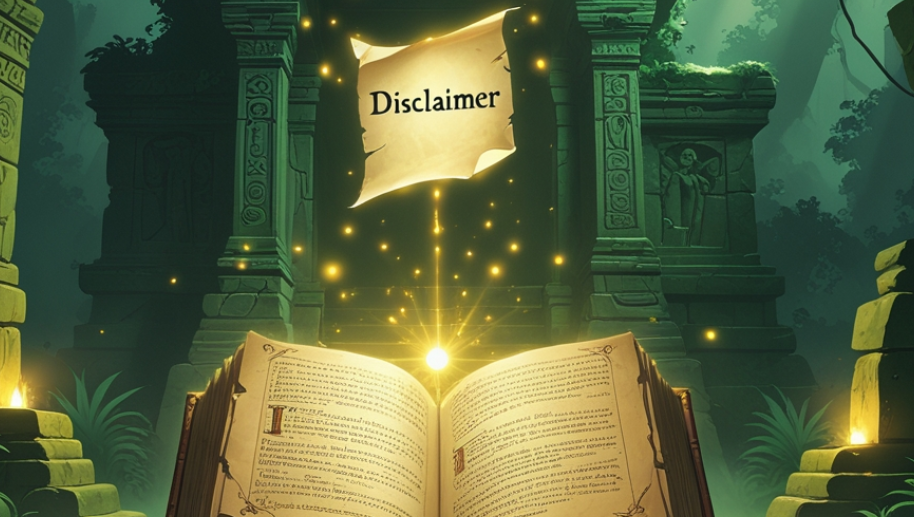Introduction
If you’re a fan of Dungeons & Dragons (D&D), you’ve probably come across the Tomb of Annihilation disclaimer while flipping through the campaign guide or exploring the digital version on D&D Beyond. This short note, though easily overlooked, carries an important message about representation, respect, and responsibility in storytelling.
The Tomb of Annihilation disclaimer is more than just a formality — it reflects how Dungeons & Dragons has evolved to address cultural sensitivity and accurate portrayal of inspiration. In this article, we’ll break down what the disclaimer means, why it exists, and how it impacts both players and creators in the D&D universe.
What is the Tomb of Annihilation Disclaimer?
The Tomb of Annihilation disclaimer is a short editorial statement included in the Tomb of Annihilation adventure module, published by Wizards of the Coast in 2017. The adventure is set in the jungle region of Chult, a fictional land inspired by African cultures, myths, and landscapes.
This disclaimer was added to acknowledge that previous portrayals of non-European cultures in D&D may have been problematic or inaccurate, and to emphasize the company’s commitment to cultural appreciation and respect in future storytelling.
Here’s the essence of what the disclaimer says:
Disclaimer: Some of the peoples and cultures depicted in this adventure draw from the diverse societies, customs, and folklore of Africa. As with all such depictions, these representations are inspired by real-world cultures but are not direct portrayals of them. We recognize that past depictions of non-European cultures in D&D have sometimes been problematic, and we are committed to presenting cultures respectfully and with appreciation for their richness.
This short paragraph became a major step in D&D’s journey toward diversity, inclusion, and cultural awareness.
Features of the Tomb of Annihilation Disclaimer
The Tomb of Annihilation disclaimer might be brief, but it has several important features that make it meaningful:
- Acknowledgment of Past Issues: It openly admits that earlier versions of D&D had stereotypical depictions of non-European cultures.
- Cultural Sensitivity: It shows an effort to respect global traditions and histories that inspire D&D’s fantasy worlds.
- Transparency: Wizards of the Coast communicates openly about their values and creative approach.
- Inclusivity: The disclaimer promotes an environment where all cultures are represented fairly.
- Education: It reminds players and Dungeon Masters (DMs) to be thoughtful when using real-world cultural inspirations in fantasy games.
These features show that the disclaimer isn’t just a formality — it’s a symbol of change and awareness in the tabletop gaming industry.
Benefits of the Tomb of Annihilation Disclaimer
Adding a disclaimer like this brings several benefits to both creators and the community:
1. Promotes Respectful Representation
It encourages writers and artists to research and understand cultures before using them as inspiration.
2. Builds Trust
Fans appreciate when companies acknowledge mistakes and work toward improvement.
3. Encourages Inclusivity
Players from diverse backgrounds feel more welcomed and represented in D&D’s storytelling.
4. Sets Industry Standards
The disclaimer sets a positive example for other fantasy and RPG creators to follow.
5. Prevents Misunderstanding
By explaining intent, it helps avoid confusion or offense regarding the source of creative inspiration.
In short, the Tomb of Annihilation disclaimer helps build a healthier, more inclusive community around Dungeons & Dragons.
How the Tomb of Annihilation Disclaimer Works
The disclaimer serves as a contextual guide rather than a gameplay element. Here’s how it works in practice:
- Appears in the Book: It’s placed at the start of the Tomb of Annihilation adventure module.
- Sets Reader Expectations: Before diving into the story, readers understand that the world of Chult is fictional but inspired by real-world traditions.
- Encourages Sensitivity: Dungeon Masters are reminded to treat cultural themes with respect and balance.
- Supports Creative Freedom: It allows storytelling while ensuring awareness of real-world implications.
Essentially, it tells players and DMs: “Enjoy this fantasy, but be mindful of its inspirations.”
Pros and Cons of the Tomb of Annihilation Disclaimer
Like any addition to a creative product, the Tomb of Annihilation disclaimer has its pros and cons.
✅ Pros
- Promotes cultural awareness
- Encourages diversity in storytelling
- Shows accountability from the creators
- Builds community trust
- Helps modernize the D&D brand
❌ Cons
- Some players see it as unnecessary “corporate wording”
- Doesn’t change existing problematic details in older editions
- May feel generic without deeper community involvement
Despite mixed opinions, the pros clearly outweigh the cons — the disclaimer represents progress and responsibility in creative storytelling.
Why the Tomb of Annihilation Disclaimer Matters
The Tomb of Annihilation disclaimer is a turning point for Dungeons & Dragons. It reflects a shift in storytelling culture — one that balances fantasy creativity with social awareness.
For decades, D&D borrowed themes from world mythologies but often lacked accurate representation or cultural sensitivity. With this disclaimer, Wizards of the Coast acknowledges the real-world influence behind their fantasy worlds while promising to handle those inspirations respectfully.
This helps create a more inclusive environment, allowing every player — regardless of background — to feel represented and valued in the world’s most popular tabletop RPG.
Safety and Ethical Importance
From a safety and ethical standpoint, the disclaimer helps protect both the creators and players:
- Cultural Safety: Prevents harmful stereotypes and misrepresentations.
- Community Safety: Reduces the risk of cultural backlash or misunderstanding.
- Ethical Storytelling: Reminds game masters to tell stories that celebrate diversity rather than exploit it.
The Tomb of Annihilation disclaimer ensures that D&D’s fantasy adventures remain fun, respectful, and educational for all.
Alternatives to the Tomb of Annihilation Disclaimer
If you’re a game developer, writer, or creator, you can take inspiration from this disclaimer and adapt similar approaches. Here are a few alternatives or methods to ensure cultural sensitivity in creative work:
- Cultural Consultation: Work with cultural experts or community members.
- Sensitivity Readers: Hire editors who specialize in identifying stereotypes or problematic themes.
- Inclusive Storytelling: Feature characters and settings from diverse perspectives.
- Transparency Statements: Include notes about the origin and intention of your world-building.
- Continuous Learning: Keep updating old content to reflect modern understanding.
These practices can serve as alternatives to or extensions of the Tomb of Annihilation disclaimer approach.
Tips for Creators and Players
If you’re creating or running a D&D campaign inspired by real cultures, follow these tips to stay respectful and creative:
- 🧠 Research thoroughly before building your world.
- 💬 Talk with players about cultural themes in your campaign.
- 🤝 Respect diversity and avoid stereotypes.
- ✍️ Acknowledge inspirations in your story or setting notes.
- 🔍 Use disclaimers if your work draws from real-world elements.
These small steps can make your game inclusive, authentic, and fun for everyone.
Frequently Asked Questions (FAQs)
1. What is the Tomb of Annihilation disclaimer?
The Tomb of Annihilation disclaimer is a short statement included by Wizards of the Coast to acknowledge cultural inspirations and promote respectful representation.
2. Why was the disclaimer added?
It was added to address past cultural insensitivity in D&D and show the creators’ commitment to inclusivity and awareness.
3. Does the disclaimer affect gameplay?
No. It doesn’t change the mechanics or story; it simply provides context and guidance for respectful storytelling.
4. Is the Tomb of Annihilation disclaimer unique?
While this disclaimer is specific to the Tomb of Annihilation adventure, similar notes now appear in other D&D materials to support diversity.
5. How does it help the D&D community?
It helps the community grow more inclusive, informed, and respectful, encouraging players to appreciate cultural depth in storytelling.
Conclusion
The Tomb of Annihilation disclaimer might be short, but it carries a big message. It marks a positive change in how Dungeons & Dragons handles cultural themes, making the game more inclusive and aware. By acknowledging inspiration and addressing past missteps, Wizards of the Coast has taken an important step toward responsible creativity.
For players and creators alike, this disclaimer serves as a reminder — fantasy storytelling is most powerful when it celebrates, not misrepresents, the diversity of our world. The Tomb of Annihilation disclaimer is a symbol of growth, respect, and the evolving relationship between creativity and culture.
Final Line:
What do you think about the Tomb of Annihilation disclaimer? Share your thoughts or experiences in the comments — your perspective can help others understand why it matters!

